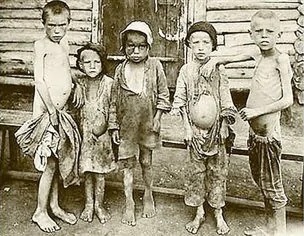Last week, the U.S. pressured Ukraine to cede land to invading Russia while demanding nothing from Russia except for an end to an invasion that has cost 220,000 Russian servicemen and at least 100,000 Ukrainian soldiers their lives (not to mention the injured, captured, and widespread devastation to Ukrainian cities and infrastructure).
The figures are higher than the the sixty thousand killed in Gaza.
“There is no justification for forcing thousands of civilians to live in darkness and cold. We are deeply affected by the news of attacks on electrical systems in civilian structures, which have made life even more difficult for many people.”
With these words, Vatican Cardinal Secretary of State Pietro Parolin emphasized the suffering of the war-struck Ukrainian people during his homily at a Mass on Thursday, November 20, at the Church of Sant’Andrea della Valle in Rome.

The liturgy was celebrated to remember the victims of the 1932-33 Holodomor, a famine perpetrated by the Soviet regime, after the Ukrainian population had protested against the collective property system, which caused millions—not thousands, but millions—of deaths.
Translation: the fruit of Communism, the fruit of godlessness, was a famine that cost at least five times as many lives as the Irish Famine. And Ukraine, a deeply devout Catholic-Orthodox country (with major apparitions of Mary), remains persecuted.
“The good will be martyred, the Holy Father will have much to suffer; various nations will be annihilated,” it had been said at Fatima, and if what happened during the 1920s, if the execution of landowners and freethinkers and priests wasn’t enough (some priests were nailed to walls), there was the horror caused when Stalin, seeking to quash Ukrainian nationalism and terrorize private farmers, hauled all that republic’s wheat to Russia and created a severe, almost incomprehensible famine.
In 1933 alone at least 4.6 million and perhaps as many as ten million Ukrainians perished. It was the dark horseman of the Apocalypse. “Practically every village has a mass grave from the artificial famine of 1933,” Dr. James Mace, director of the Commission on the Ukraine Famine, told me. “There was tremendous demographic damage—epic figures.”

According to another scholar, Lubomyr Hajda of Harvard, the number of dead from this period alone was comparable to the number killed during the Nazi Holocaust. Said Hajda: “In terms of absolute data the Ukrainian numbers are probably higher than any other mass atrocity we’re familiar with. It’s not proportionately as high as what happened to the Jews — whose entire European population was nearly exterminated — and we don’t have a good reckoning from China, but the Ukrainian experience has certainly been one of the most horrific of this century.”
How many who disseminate opinions on the current war are conversant with these historic details?

Their crops stolen by the Muscovites and their herds slaughtered for Russian consumption, Ukrainians were forced to eat nettles, tree bark, leaves, milkweed, worms, rodents, and crows. Entire villages were devoid of life — the cats and dogs devoured when the crows and rats were gone, followed by numerous incidents of cannibalism. In cities where children were abandoned by parents who couldn’t provide so much as a morsel of black bread, trucks came each night and picked up corpses that littered every major thoroughfare. There was a black market in human meat.

“We arrived at a nameless village,” recalled one survivor. “There was not a soul to be seen. Our purpose was to weed beets. It was spring and the beets were still growing. I asked the leader why there was such a stench coming from a neighboring village. The name of the village was Katerynivka. There were some peasants gathering wild garlic to make dinner, he answered. Later on, I grew thirsty and they wouldn’t give us water, so I went toward the village without permission. There I saw a truly horrible picture. Everywhere bodies were sitting and lying and they were decomposing.”

Added another witness, “People died of hunger in their houses, the fields, in the yards, streets, railroad stations, on the roofs of train cars. Bodies were collected everywhere and taken to a large hole where they were covered with lime. One spring day I heard the cries of a child. Going up to the yard where the cries were coming from, I saw a young mother sitting on a bank of earth against the house. There was an infant on her breast which was frantically trying to suck its mother’s breasts, which were as dry as empty bags. It seemed at first that she was asleep, but when I touched her shoulder, she fell like a blade of grass. She was dead.”
So enfamished was the populace that mothers butchered their deceased children and children consumed their parents.
“I believe the famine deaths to have been about seven million—five million in the Ukraine, one million in the Kuban and North Caucasus, and one million in the Don and Lower Volga,” said Ukrainian scholar Robert Conquest.
Please let those with views assimilate these details; please pray for both countries.
[resources: Witness, by Josyp Terelya with Michael H. Brown]
+

